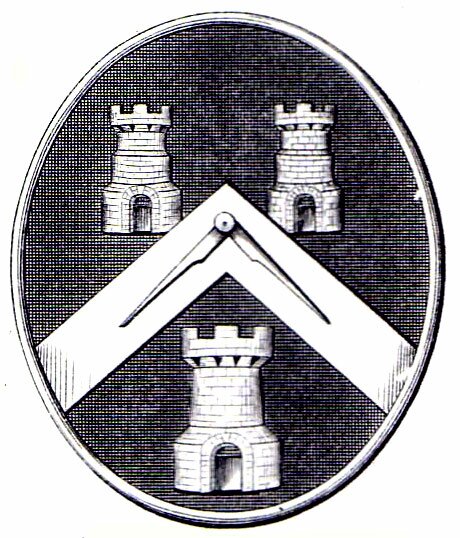English Craft Freemasonry
Workings or the Difference between
the
Masonic High Council the Mother High Council of the World
and the
United Grand Lodge of England
The two main workings under the UGLE are Emulation and Stability. Both of these workings arrived in England via the Irish and Scottish Lodges that formed the Grand Lodge of the Antients and which practiced Freemasonry as practiced and taught in Ireland and Scotland, in a totally different way, manner and form from the way in which masonry had been worked since time immemorial in England. The English Lodges, which followed the union on the 27th of December 1813 were made to abandon their unique workings, and many English old Lodges had their traditional Craft workings which were far more beautiful, meaningful and symbolically correct than the basic and symbolically less accurate Irish and Scottish Masonic workings. It is indeed seen as almost a parody of the Craft history to know that pure Craft Freemasonry in the British Isles originated in England as clearly recorded and stated in the Regius Manuscript of 1390.
STABILITY
The Stability workings come from the Stability Lodge of Instruction (sanctioned by the Lodge of Stability now No.217 and formerly a “Antients” Lodge). It had among its 17 founders 16 brethren from the “Antients” body, a year after the Lodge of Reconciliation had finished its work. Three Members of that Lodge were among its founders, and are claimed to have taught the forms and ceremonies rehearsed in it. In all, 8 members of the Lodge of Reconciliation joined the Stability Lodge of Instruction at various times.
EMULATION
The Emulation Lodge of Improvement was founded six years after Stability – that is, in 1823 – under the sanction of a London Lodge, an old “Antients” Lodge, now the Royal York Lodge of Perseverance, No.7; but in 1830 it passed to the sanction of the Lodge of the Unions, No. 256, formerly a “Moderns” Lodge, under which it still acts. Of the 21 founders, 10 were of the “Antients” body.
THE CRAFT RITUALS WORKINGS OF THE REGULAR GRAND LODGE OF ENGLAND
The Regular Grand Lodge of England promotes the practice of the following based English origin Craft Freemasonry Rituals.
English Rite (1730-40)
Ancient English Rite (1730-40)
Clermont Rite (1745)The Regular Grand Lodge has a multi ritualistic Grand Lodge also practices other Ritual such as the :
Rectified Scottish Rite (1783)
(Meaning that was rectified to the English correct tradition of the Craft, while keeping the Chivalric flair in.), the Ancient and Primitive Rite, and several other Rituals that comply with the necessary requirements in accordance with original English Craft Freemasonry.
Los Rituales de la Francmasonería Inglesa
y la diferencia entre la
Alto Consejo Masonico Madre del Mundo
y la
Gran Logia Unida de Inglaterra
Los dos rituales principales utilizados por la Gran Logia Unida de Inglaterra son los de Emulación y Estabilidad. Ambos rituales llegaron a Inglaterra a través de las logias Escocesas e Irlandesas que formaron la llamada Gran Logia de los “Antients” y practicaban una Francmasonería de origen Escocesa e Irlandesa, que son tradiciones totalmente diferentes de la masonería tradicional simbólica practicada desde tiempos inmemoriales en Inglaterra.
Las logias Inglesas, posterior a la unión del 27 de Diciembre de 1813 fueron obligadas a abandonar sus rituales tradicionales que eran mas hermosos, significativos y simbólicamente mas correctos que los rituales básicos y de no tanta exactitud que los rituales provenientes de Irlandeses y Escoceses.
En realidad esto es visto casi como una parodia de la historia de la Orden, sabiendo que la masonería en las Islas británicas se originó en Inglaterra como se puede apreciar en el Manuscrito Regius de 1390. Es en Inglaterra que la Masonería tiene su inicio, y es desde Inglaterra hacia Irlanda y Escocia que la Masonería se expandió.ESTABILIDAD
Los rituales llamados Estabilidad fueron recibidos a través de la Logia de Investigación Estabilidad (aprobados por la Logia Estabilidad hoy Nº 217 y antiguamente perteneciente a la Gran Logia de los llamados “Antients”), que tenia entre sus 17 fundadores a 16 hermanos pertenecientes a los llamados “Antients” un año después que la Logia Reconciliación termino su labor. Tres miembros de esta Logia estaban entre sus fundadores y se afirma que enseñaron las ceremonias practicadas en ella. En total 8 miembros de la Logia Reconciliación fueron miembros de la Logia Estabilidad de Instrucción en varias ocasiones.
EMULACION
La Logia Emulación fue fundada seis años después de Estabilidad, en 1823, bajo los auspicios de una Logia en Londres de los llamados “Antients”, hoy Real Logia York de Perseverancia. Nº 7, pero en 1830 pasó a la jurisdicción de la Logia Unión Nº 256, de los “Modernos”. De los 21 fundadores, 10 pertenecieron al cuerpo de los “Antients”.
RITUALES PRACTICADOS POR LA GRAN LOGIA REGULAR DE INGLATERRA
La Gran Logia Regular de Inglaterra auspicia la práctica de los siguientes rituales basados en las enseñanzas de origen ingles de la francmasonería:
Rito Inglés (1730-40)
Rito Ingles Antiguo (1730-40)
Rito Clermont (1745)La Gran Logia Regular de Inglaterra alienta una Gran Logia multi-ritualística donde se practican entre otros los siguientes ritos: Rito Escocés Rectificado (1783), (Significando que fue rectificado a la tradición inglesa mientras mantenía su influencia caballeresca), el Rito Antiguo y Primitivo, y varios otros ritos que cumplan con los requerimientos de la Francmasonería Inglesa Original.
If you have any questions or comments, we would be pleased to hear from you.
contact(at)rgle.org.uk
© The Masonic High Council 2006
www.rgle.org.uk
